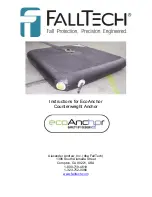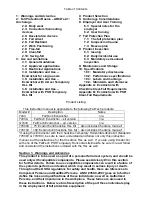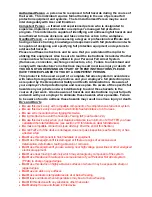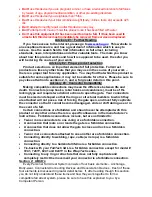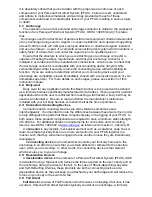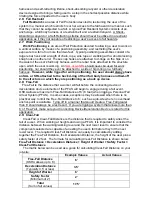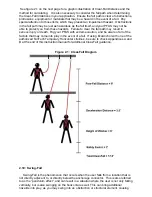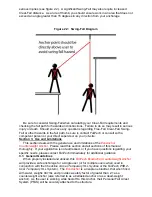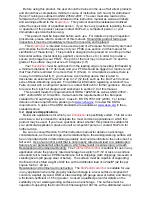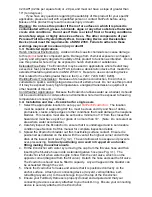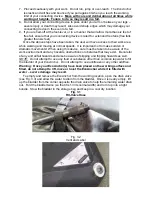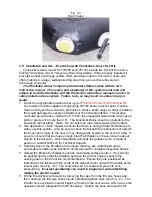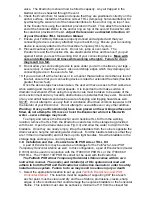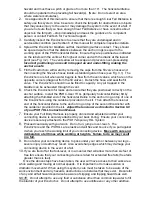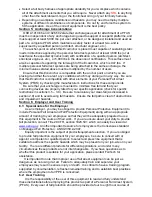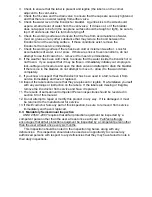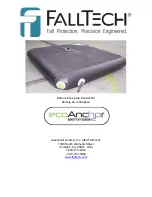
7. Proceed cautiously with your work. Do not run, jump or over-reach. The
EcoAnchor
is elastic and will flex and bounce if you pull against it when you reach the working
limit of your connecting device.
Move with care and deliberation at all times while
working at heights. Failure to do so may result in a fall.
8. Do not allow your connecting device to pass under your arm or between your legs –
severe injury or death may result. Also avoid sharp edges which may damage your
connecting device in the event of a fall.
9. If you are tied-off at the foot-level, or in a manner that will allow more than six feet of
free fall, ensure that your connecting device is rated for extended free falls (free falls
greater than six feet).
Once the above steps have been taken, the user will have access to their work area
while walking and moving at normal speeds. It is important not to make sudden or
dramatic movements! When using this device, care must be taken to be aware of the
work environment and any hazards, obstructions or obstacles that may exist. Be careful
of any and all fall hazards and also be aware of slipping and tripping hazards as well.
NOTE: Do not attempt to use any fluid or substance other than common tap water to fill
the bladder of your EcoAnchor. Do not attempt to use antifreeze or any other additive.
Warning: Once your EcoAnchor(s) have been placed on the working surface and
filled, do not attempt to lift, move or hoist the EcoAnchor while it is filled with
water – severe damage may result.
To empty and remove the EcoAnchor from the working location, open the drain valve
(see Fig. 3.3) and allow the water to drain from the bladder. Once it is nearly empty, lift
up the bladder from the corner opposite the drain valve to help the remaining water drain
out. Fold the bladder twice (so that it is 1/3 its normal width) and roll it up into a tight
bundle. Stow the bladder in the storage bag and keep in a cool dry location.
Fig. 3.1
Fill-Valve Hose
Fig. 3.2
Vent and Label

